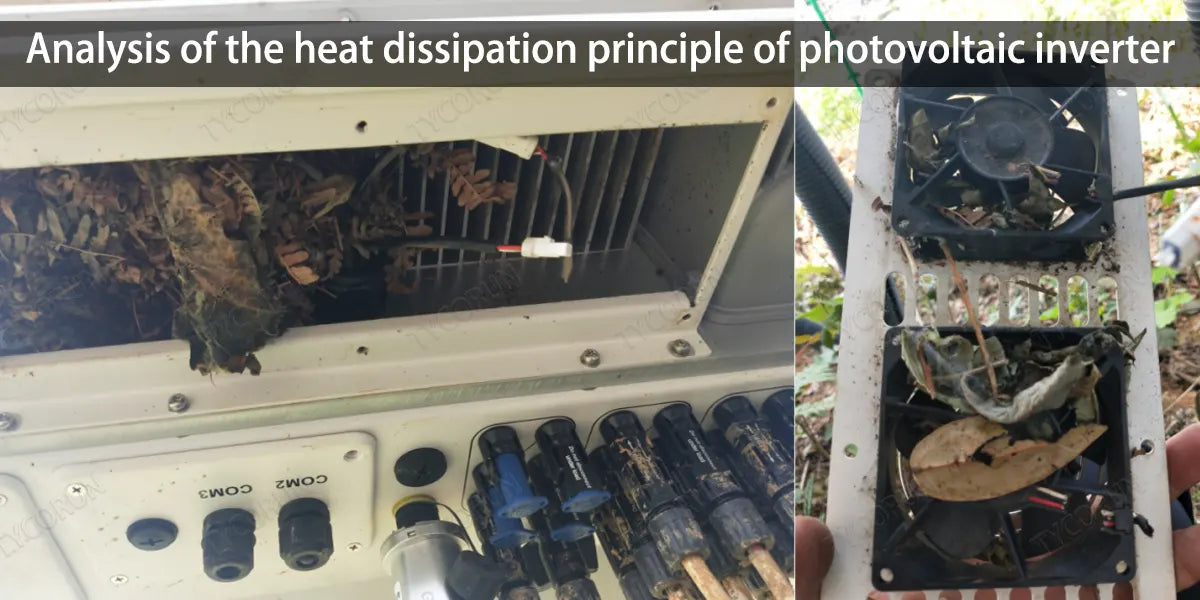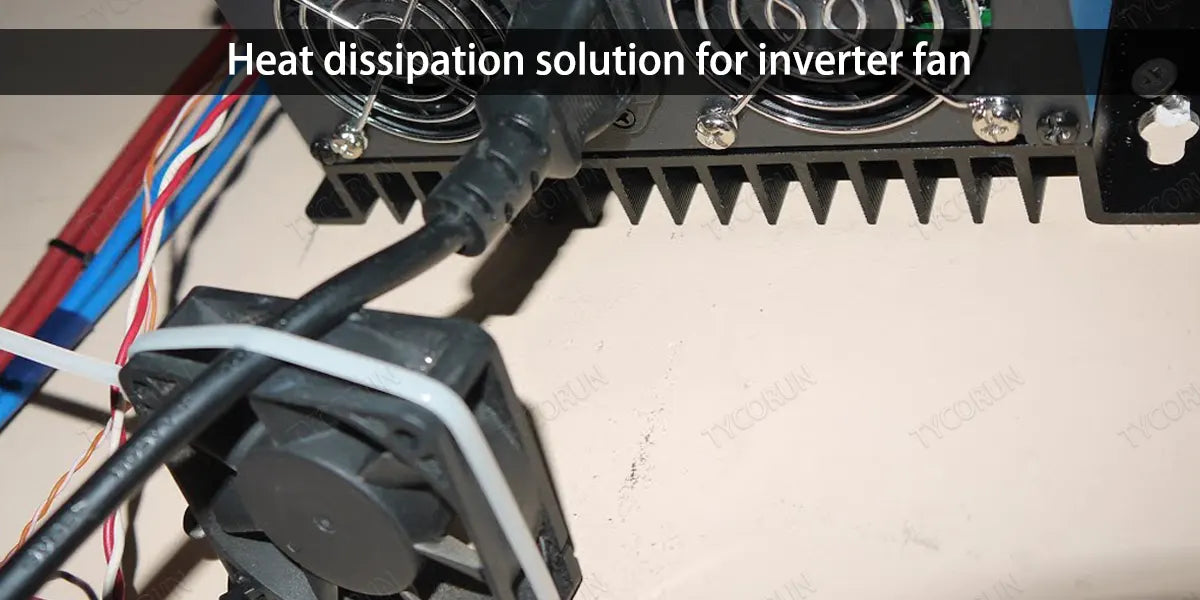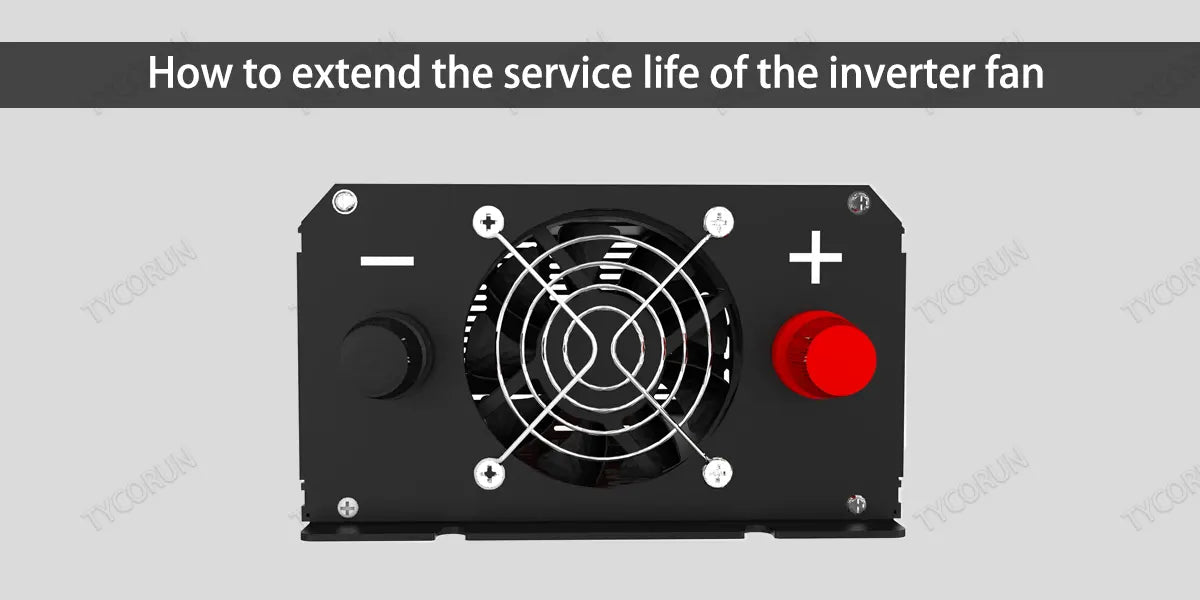
Main content:
The inverter runs in summer, the shell temperature is relatively high, and it will feel hot to the touch. So is the inverter housing hot or not? And why does the shell feel hot? The following is for these two problems combined with inverter heat dissipation to do some analysis and answers.
The heat dissipation method of inverter mainly relies on its own assembly structure (heat sink) and adopts natural heat dissipation. Or rely on external force and use inverter fan forced cooling. Inverter fan is especially important for inverters, especially high-power inverters, because heat dissipation directly affects power generation.
1. Analysis of the heat dissipation principle of photovoltaic inverter
● Heat transfer and heat equilibrium
The components in the inverter have their rated operating temperature. If the heat dissipation performance of inverter is poor, as inverter continues to work, the heat of the components cannot be transferred to the outside world, and its temperature will be higher and higher.
In order to keep the operating temperature of the internal components of the inverter within the rated temperature range to ensure its efficiency and service life, it is necessary to transfer the heat inside inverter with thermal conductive materials.
From the perspective of heat conduction, the more balanced the temperature inside and outside inverter, that is, the closer the temperature of the internal heating components and the radiator and shell, the better its thermal energy conductivity.

If the inverter is cold outside and hot inside, it means that the heat dissipation performance of inverter is not excellent. It can be seen from the above that good heat dissipation performance is very important for the inverter, and the basic principles of inverter heating and heat dissipation are explained in detail. This is also for energy storage inverter.
2. How to maintenance of inverter fans in high temperature weather
PV inverter is generally installed outdoors, affected by natural factors such as sun, rain, sand or high temperature, so the heat dissipation performance of photovoltaic inverters has become one of the main factors affecting the stable and reliable operation of inverters.
There are two ways to dissipate heat in the inverter: one is to use natural heat dissipation, that is, relying on its own radiator to dissipate heat, and the other is supplemented by an inverter fan, relying on external force forced cooling.

At high temperatures, the good heat dissipation performance of inverter fan is the key to efficient power generation and reliable operation of inverter, but the inverter placed in the external environment has many factors that will affect the operation of an inverter fan, so regular maintenance is conducive to the normal operation of inverter. This article shares the problems related to the maintenance of inverter fans.
3. Main causes and effects of inverter fan failure
● Mainly causes of inverter fan failure
The photovoltaic inverter is installed in the outdoor environment, so many uncontrollable factors will affect the operation of inverter fan, such as the accumulation of dead branches and leaves, the stuttering of adobe, snakes, insects, rats and ants.
● Mainly affects of inverter fan failure
For inverter, once the heat dissipation failure of the external inverter fan, such as fan blockage, jamming, etc., or rat ants bite the fan power supply cable, it will directly cause it to stop.
In turn, it causes poor heat dissipation of the inverter and causes an over-temperature alarm. Especially in the high temperature stage in summer, the over-temperature protection of inverter operation not only affects the power generation of the system, but also causes damage to the inverter.
4. Heat dissipation solution for inverter fan
In order to ensure the normal operation of an inverter cooling inverter fan, reasonable installation in the early stage and operation and maintenance in the later stage are essential.
First of all, it is necessary to avoid the installation environment with foreign matter accumulation or add a protection mechanism, and regularly clean and replace the inverter fan on time through monitoring and on-site investigation to ensure the normal operation of inverter.

● Reasonable installation
Reasonable installation needs to consider the following points. Comprehensive consideration can improve system reliability and reduce the amount of subsequent operation and maintenance. These points include:
- Examine the installation environment
In the early installation, we need to fully evaluate the overall environment of inverter fan installation, and it is not recommended to choose an area with serious mud accumulation, many dead branches and leaves, or overgrown weeds. These will affect the normal operation of inverter fan, causing the noise of inverter to increase or block the inverter cooling duct and fan, resulting in failure.
Therefore, inverter installation environment needs to be considered as a whole, and it is recommended that the inverter of a large photovoltaic power station be installed centrally away from the bush or placed under the photovoltaic module to form a shield. Household installation areas like home energy storage should consider solid walls that do not fall off, preferably areas covered by eaves.
- Pay attention to the installation distance
When multiple inverters are installed, the installation distance is also very important, which determines the heat dissipation performance of inverter and the efficiency of the inverter fan. If the distance is small, the frequency of operation of inverter fan increases, and the heat dissipation is not ideal, the power generation of the system will be affected. Different inverters have different installation distances.
● Add protective devices
Of course, a better way is to add external facilities such as sun visors to the inverter, which can not only prevent dirt or dead leaves from blocking the heat dissipation channel and inverter fan, but also block direct sunlight and reduce the temperature rise of inverter. But note that if it is an inverter connected to the high efficiency solar panels, be careful not to block them.
5. How to extend the service life of the inverter fan
- Regular maintenance
- Check it regularly
- Clean up regularly
- Clean the inverter fan with a soft brush regularly, and it is recommended to clean it once a month.
- Troubleshooting

If inverter displays information such as "inverter fan abnormal" or "overtemperature protection", you need to check whether the inverter cooling fan is running on site, or if there is a foreign object stuck, you can try to clean the foreign object and toggle the fan. If an inverter fan is still not running, please contact after-sales for processing.
Inverter heat dissipation performance is very important.The inverter fan, as the key heat dissipation equipment of inverter, needs to be fully paid attention to in the early installation and later operation and maintenance.
Regularly clean and maintain inverter fan to ensure rapid heat dissipation and cooling of the inverter, so as to ensure the long-term stable operation of inverter and ensure efficient power generation of the system.
6. Conclusion
For high-power inverters, once the inverter fan fails, it not only affects power generation, but also seriously damages the interests of customers. The so-called details determine success or failure. We must pay attention to details in the early selection of the installation environment, later operation and maintenance, etc., to ensure the stable operation of our photovoltaic system and bring long-term benefits.
If you want to know more information about inverters, please check pure sine wave inverter 3000w, 2000 watt car inverter, car inverter 1000 watt, 500w car inverter
Related articles: off grid solar batteries, Top 5 inverter battery companies, distributed pv system
















